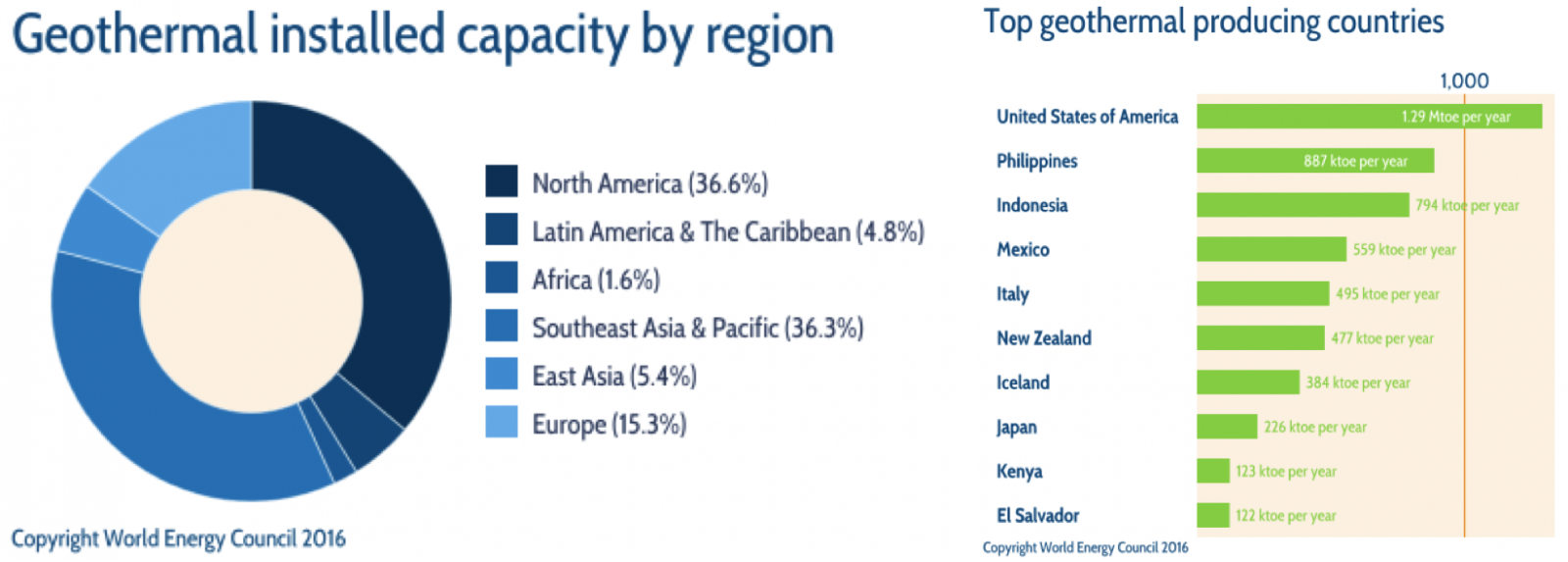Late last month the Geothermal Criteria, under the Climate Bonds Standard, were released into the market allowing issuers the opportunity to certify green bonds linked to geothermal assets.
Philippines power utility, AP Renewables Inc (APRI), was the first to come to market using the new criteria with their certified green bond, backed by the Asian Development Bank (ADB) – more details below.

The latest investment opportunity under the Standard
The Geothermal criteria are scientifically grounded (or evidence based) low-carbon principles for geothermal projects. Geothermal Power projects and assets can be assessed against these criteria to verify their green credentials.
The Criteria were developed and approved by a Technical Working Group (TWG) with input from an Expert Advisory Committee. The criteria underwent public consultation to give stakeholders a chance to comment on the practicality of the criteria.
The Geothermal criteria sets CO2 thresholds
To qualify under the standard, assets financed must have direct emissions of less than 100gCO2/kWh. The majority of geothermal power plants globally would be eligible under this emissions threshold1.
Subject to meeting the threshold, eligible projects can either be new developments or existing geothermal projects that include technology upgrades.
In addition, if a geothermal project has been reviewed and registered under the Clean Development Mechanism it is also eligible for Climate Bonds Certification.
Geothermal energy has the potential to provide a significant amount of world primary energy consumption
The potential of current geothermally-active regions is estimated to be able to provide roughly 10% of world primary energy consumption.
Additionally, Enhanced Geothermal Systems (EGS) technologies are being developed that will expand geothermal’s geographical range, and hence increase this potential by an order of magnitude.
Geothermal looks set to be a huge source of clean energy for the future
However, in some instances Geothermal can also be a source of emissions, a concept that may be counterintuitive. When Climate Bonds convened its Geothermal TWG to discuss eligibility in this sector it discovered that some geothermal plants can actually generate higher direct greenhouse gas emissions than fossil fuel equivalents – via drilling through some rock types can lead to fugitive GHG emissions.
The Geothermal criteria addresses this issue with the emission threshold that projects must meet if they are to be certified.
An International First
APRI, backed by ADB, brought the first Climate Bonds Certified geothermal bond to market
Shortly after the release of the Geothermal criteria, Philippines based APRI issued a certified green bond using the Geothermal Criteria. This issuance was certified under the Climate Bonds Standard with projects financed deemed eligible under the Geothermal Criteria.
Denominated in local currency the bond closed at PHP 10.7bn (USD 225m). The Asian Development Bank (ADB) played a positive role providing credit enhancement and a direct loan to APRI. Bond proceeds will solely finance Filipino geothermal plants, specifically the Tiwi-MakBan plants; a complex made up of the 234 MW Tiwi facility and the 442MW MakBan plant.

Why certify a bond to comply with the Climate Bonds Standards?
The Climate Bonds Standard is an easily accessible science backed screening tool for investors and governments that allows them to prioritise climate and green bonds with confidence that the funds are being used to deliver climate change solutions.
Certified bonds must meet the requirements of the Climate Bonds Standard with assets and projects funded meeting the relevant eligibility criteria developed by Technical Working Groups.
Eligibility criteria are currently available for Solar, Wind, Low Carbon Buildings, Low Carbon Transport and, Geothermal. Soon to be available are criteria for Water, Bioenergy and Agriculture and Forestry.
The Last Word
Geothermal energy will play an important role in the shift to a low carbon economy, with many opportunities across the western Pacific Rim and other regions. However, a small proportion of geothermal projects are not low carbon.
Release of the new Geothermal criteria means investors have a sound assurance process that provides the climate due diligence, allowing them to be sure of the green credentials of their investments.

Interested to find out more? Contact us!
Climate Bonds Standards: Justine Leigh-Bell
Climate Bonds Certification: Rob Fowler
1: Bertani, R., & Thain, I. (2002, July). Geothermal Power Generating Plant C02 Emissions Survey. IGA News, (49), 1–3.
Disclaimer: The information contained in this communication does not constitute investment advice and the Climate Bonds Initiative is not an investment adviser. Links to external websites are for information purposes only. The Climate Bonds Initiative accepts no responsibility for content on external websites.
The Climate Bonds Initiative is not advising on the merits or otherwise of any investment. A decision to invest in anything is solely yours. The Climate Bonds Initiative accepts no liability of any kind for investments that any individual or organisation makes, nor for investments made by third parties on behalf of an individual or organisation.

